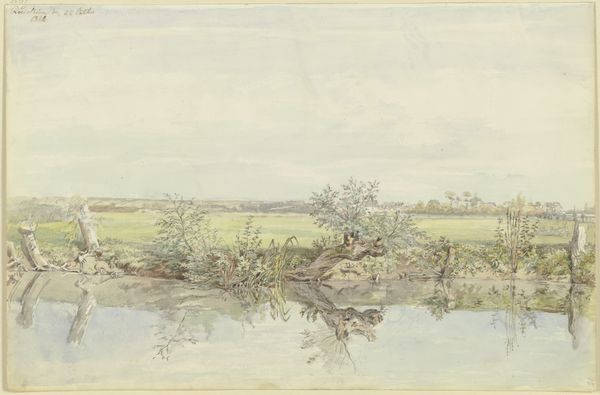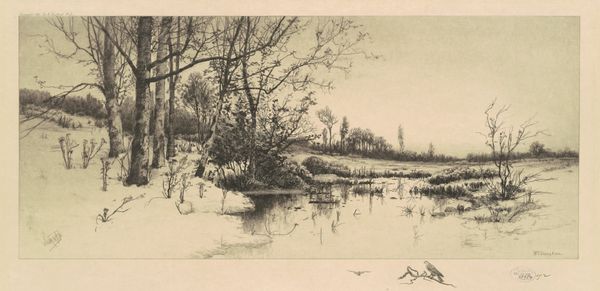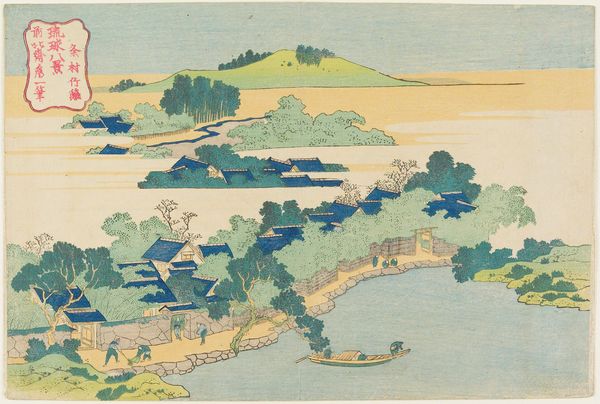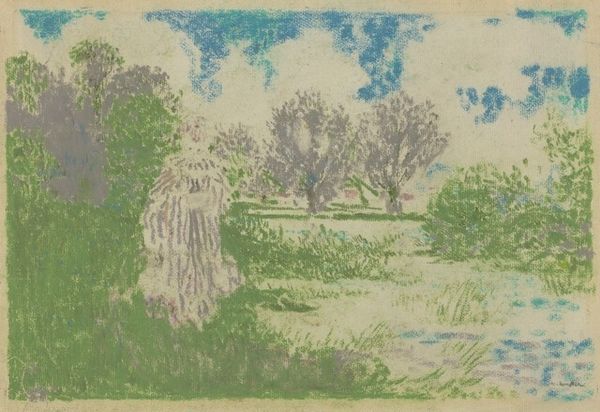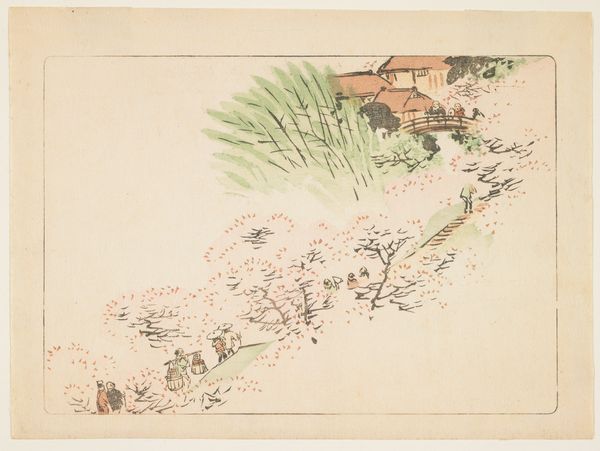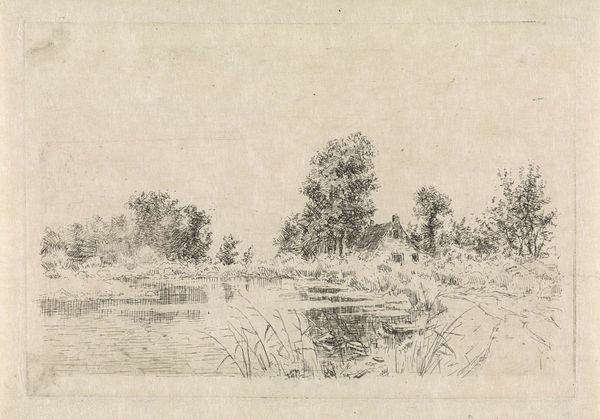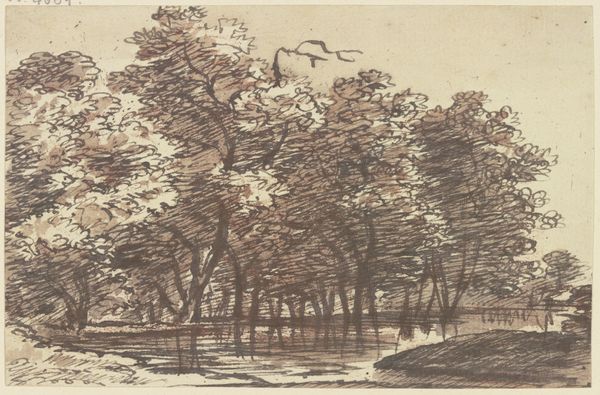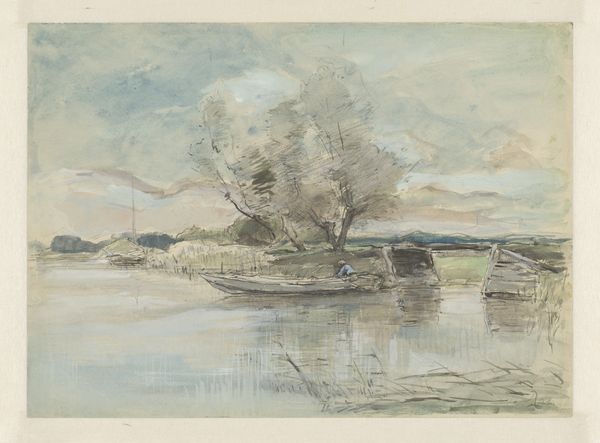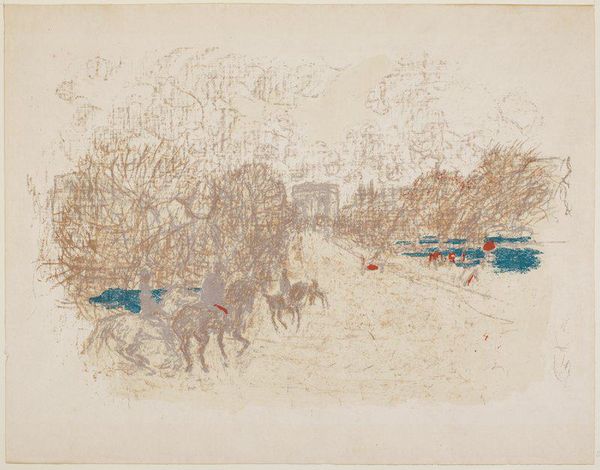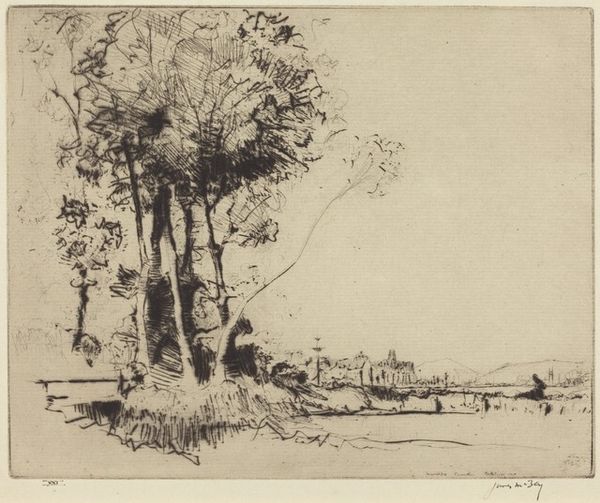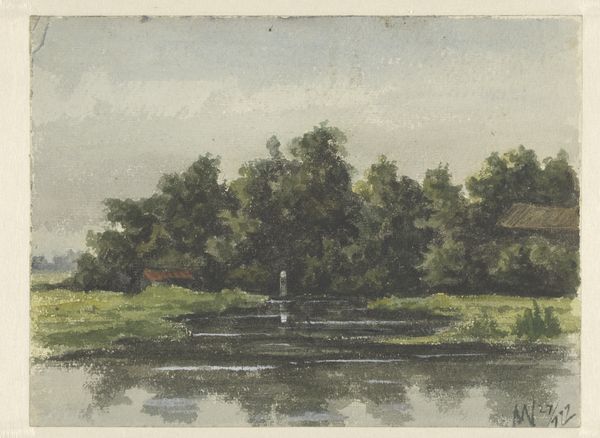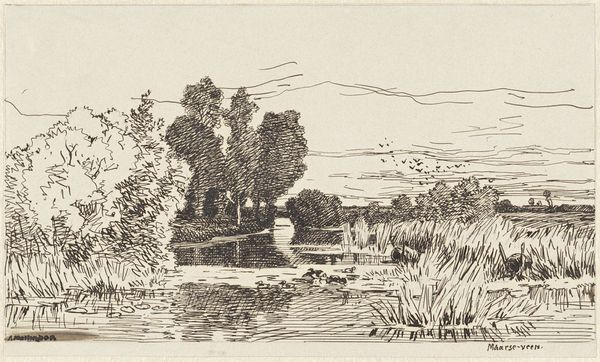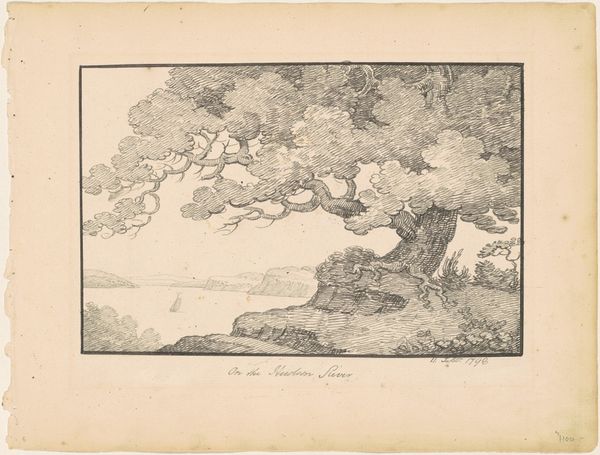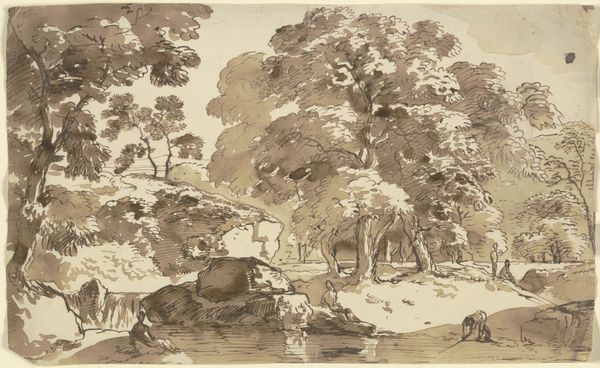
#
landscape illustration sketch
#
water colours
# print
#
england
#
botanical drawing
#
greenery
#
watercolour bleed
#
watercolour illustration
#
natural palette
#
botanical art
#
watercolor
#
warm toned green
Dimensions: 8 7/16 × 14 1/2 in. (21.43 × 36.83 cm) (image)9 7/16 × 15 5/8 in. (23.97 × 39.69 cm) (sheet)
Copyright: No Copyright - United States
Editor: Frank Morley Fletcher's "Wiston River," made around 1900-1911, is a really beautiful print, exhibited here at the Minneapolis Institute of Art. The colors are muted and calming. I'm curious, how do you interpret this work through its symbolism and cultural background? Curator: I see here a confluence of the pastoral and the personal. The river, ever flowing, symbolizes the passage of time, memory, and continuity. Reflect upon the Wiston River itself. What does this specific place evoke? Is it tied to specific events or collective memories? It speaks volumes through its seemingly simple representation of the landscape, tapping into England's own historical imagery of its land and nature. It almost functions as a modern secular icon, representing ideas of nationhood, cultural identity and memory of a place. Editor: So, even something that seems like just a peaceful scene actually has deeper cultural layers. Do you think the artist intended that or is it just something that developed over time? Curator: Intention is a tricky thing. What matters is how an image accrues meaning. Fletcher was clearly immersed in the Arts and Crafts movement and an idealization of rural life that spoke to English identity. Editor: That's a great point about accumulated meaning. Curator: And do notice the mirroring, not just within the reflection but also as it relates to England’s relationship to its landscape – mirroring the psychological need to represent belonging and shared identity in visual culture. The trees, their branches – what might that represent? Is this simply just decorative or a deliberate symbolic statement? Editor: That's fascinating! I never considered the deeper cultural implications of what appears to be a standard landscape painting. I’m going to look at landscapes in a different light from now on! Curator: And perhaps this heightened awareness allows you to explore similar themes that span generations within our visual lexicon.
Comments
minneapolisinstituteofart over 1 year ago
⋮
The stillness of this very English scene belies the difficulty required to make it. Frank Morley Fletcher almost single-handedly popularized the color woodcut in Britain early in the last century by working out and then sharing how Japanese artists had made color woodblock prints since the 1760s. In Japan one person designed the image, one carved separate blocks for the various colors, and one inked and printed the image, but Fletcher believed in doing every step himself. Mixing watercolors with rice-flour paste to give the colors body, he achieved a wonderfully muted palette in Wiston River, capturing just the right shades of earlymorning green. A bit of redness added along the horizon line suggests the impending sun. The perfectly positioned reflections in the water—a nod to the Japanese penchant for simplified shapes—show how meticulous and painstaking Fletcher was as a printer. He made up to 100 impressions of each design, and produced only fourteen different color woodcuts in his lifetime.
Join the conversation
Join millions of artists and users on Artera today and experience the ultimate creative platform.
